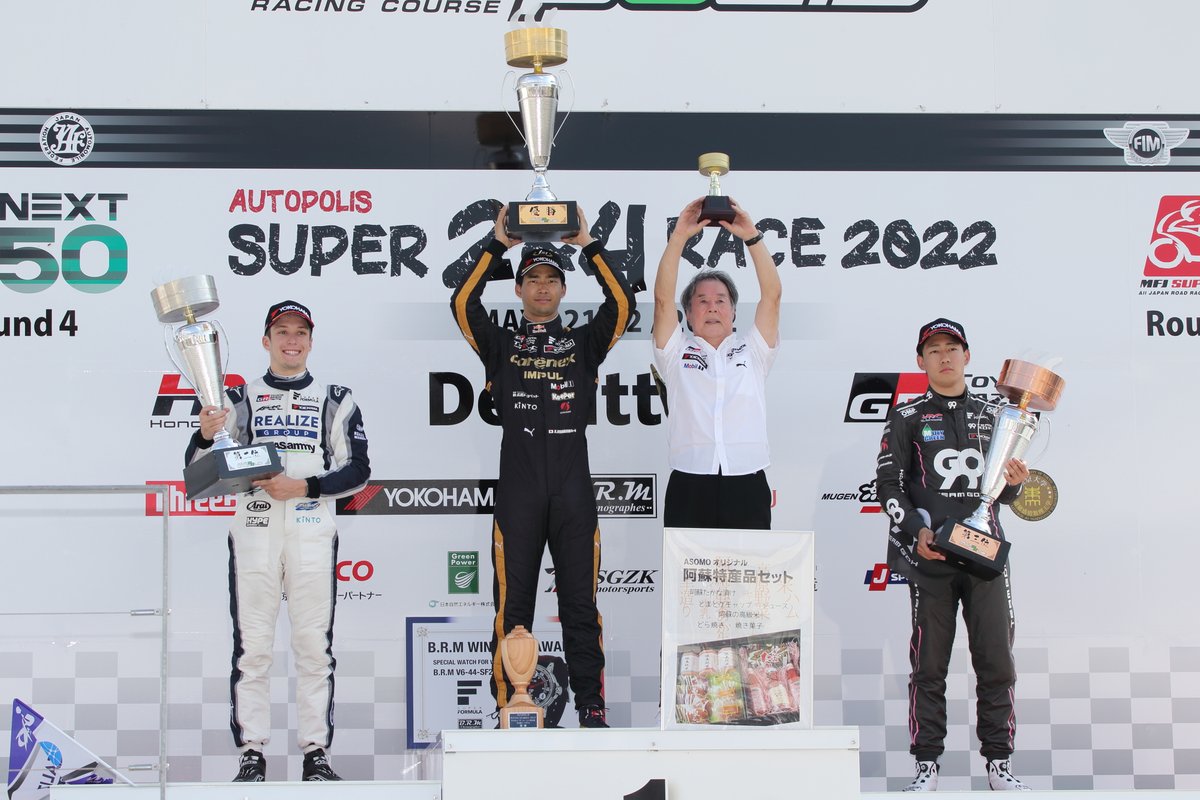
Japan is blessed with more than its fair share of hallowed racing venues, but perhaps one that doesn’t get the recognition that it deserves is Autopolis. Unlike Suzuka and Fuji, it has never hosted a dramatic Formula 1 showdown, nor has it hosted series like IndyCar or MotoGP like Motegi. The most prolific event it has hosted was a single round of the FIA World Sports Car Championship back in 1991, which was supposed to be a prelude to an inaugural F1 grand prix in 1993 that never ended up taking place.
It’s even a relative latecomer to the Japanese domestic motorsport schedule, having only started hosting JGTC (now Super GT) regularly in 2003 and Formula Nippon (now Super Formula) in 2009. Perhaps part of that is down to its awkward location in the mountains on Kyushu, the southernmost of Japan’s four home islands, meaning that a trip from Tokyo to Autopolis requires a two-hour flight, followed by a one-hour drive (or, for the more environmentally-minded, a six-hour trip by bullet train, followed by a one-hour drive).
But according to Sacha Fenestraz, who has just concluded a three-year stint racing in both of Japan’s top categories to join Nissan in Formula E, it’s more than worth the trip.
Autopolis is not one of those super-tight layouts like Okayama (formerly TI Aida) or Sugo - selected by Nick Cassidy as his favourite circuit. But it still offers virtually no margin for error, with barriers close to the track in many places and no tarmac run-off areas to be seen around its 2.904-mile layout that features a mix of high, medium and low-speed corners.
Throw in elevation change of 52 metres - for reference, Laguna Seca has 55 metres of elevation - and you get a driving challenge perhaps only matched by Suzuka’s famous first sector across Japan’s other major circuits.
“It’s an amazing track,” enthuses Fenestraz. “There are a lot of ups and downs, like a roller-coaster. After Turn 10 [an off-camber left-hand hairpin] you go down that massive downhill straight, then you have the crazy-fast downhill right-hander.
“Then that final sector has a lot of very tight corners, very harsh on the tyres. That’s where it’s important to manage them because it’s so easy to destroy your rear tyres.

“It’s bumpy as well, so it’s tough physically. At Turn 1 [a medium-speed right-hander] you don’t see the apex, it’s slightly blind and the braking area is bumpy and easy to lock-up.
“Like Sugo, if you go off, you don’t have [tarmac] run-off; you’re in the gravel and probably the wall. I always enjoy the pressure of not having any margin to make mistakes.”
Autopolis has been relatively kind to Fenestraz, who took a hat-trick of wins upon his first visit to the venue in 2019 for his title-winning campaign in All-Japan Formula 3. His first visit in a Super Formula car was memorable for rather less positive reasons, as a wheel fell off his Kondo Racing machine during the race.
Visa woes amid Japan’s strict COVID-19 travel restrictions meant he would have to wait until this year for a second go in a top-level single-seater at the track. In that race, Fenestraz showed his knack for tyre preservation to ensure he finished a strong second behind Ryo Hirakawa, cementing his status as a title contender in a year he would go on to finish runner-up in the standings to Tomoki Nojiri.
As well as the track layout itself, Fenestraz also raves about the surrounding area near Autopolis, which sits just on the border between Oita and Kumamoto prefectures, with the stunning scenery of the Aso-Kuju National Park close by. The drive to the track along the locally-famous ‘Milk Road’ from the city of Kumamoto is also a favourite among Super Formula and Super GT personnel and fans alike, featuring plenty of layovers where you can stop and admire the view.
“The surrounding area is really beautiful with the mountains, the volcano [Mount Aso]… sometimes you can even see an eruption!” Fenestraz says. “Even the drive to the track is super-fun. Everything is really nice, it’s a good place to visit.”
It seems unlikely that Autopolis will ever host an event of the stature of the FIA WSC again, let alone a grand prix, owing to its remote location and aging facilities. But, as Fenestraz says, any fans of Japanese motorsport who plan to take advantage of the country’s recently-opened borders would be well-advised to add a stop-off in Kyushu to their itinerary and experience the country’s most scenic track and all the local delights that go with it.








